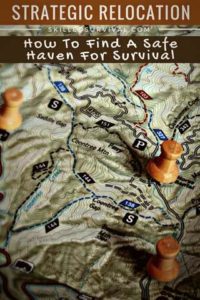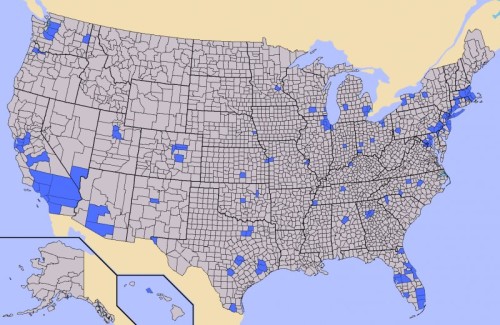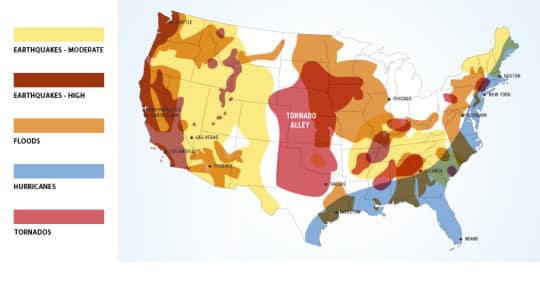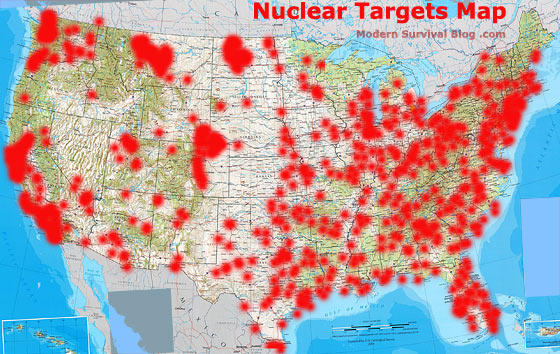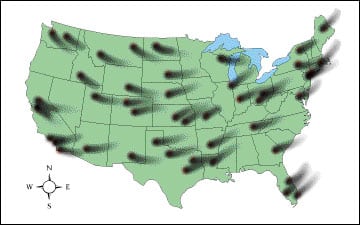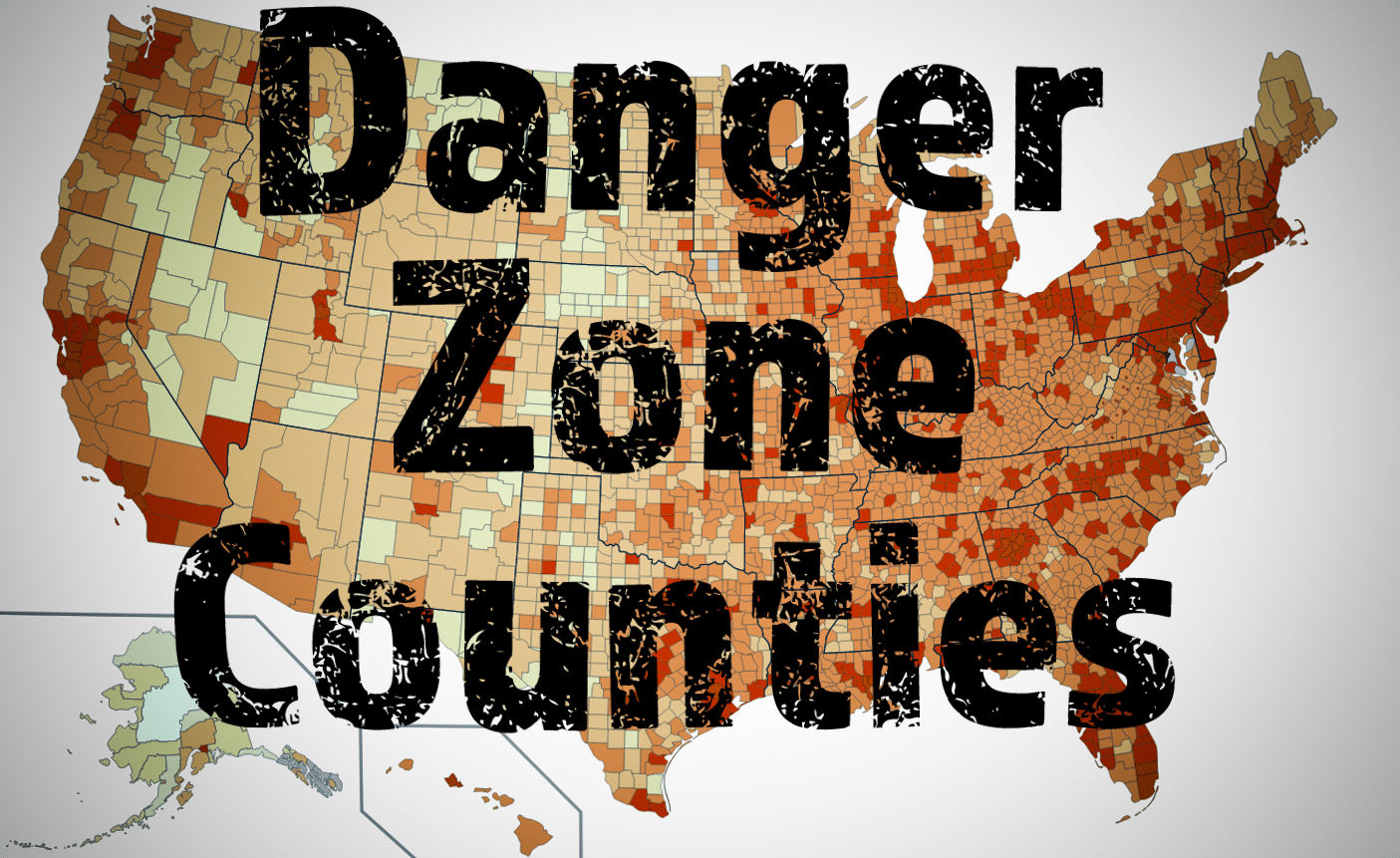A Strategic Relocation Guide: Finding Your Ideal Safe Haven
There are plenty of reasons to consider packing up and moving somewhere safer, smarter, or simply more affordable.
Maybe:
- The sheer number of people around you is starting to feel like a liability.
- Natural disasters are a growing concern.
- The cost of living has become unbearable.
- The political climate is heading in a direction you don’t trust.
Whatever the reason, strategic relocation isn’t something you do on a whim. It takes planning, research, and a clear understanding of what makes a place truly secure.
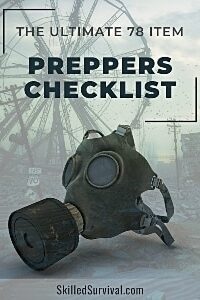
Want a free 78 item bug out bag checklist?
Enter your email below to instantly download this Complete Checklist PDF. No purchase necessary. 👇 👇Population Density
Most articles about relocation focus on the usual suspects:
- Gorgeous weather
- Proximity to the ocean
- A bustling downtown full of amenities
But let’s be real—those are just half of the equation. Personally, I’m more interested in finding a place that might not offer the flashiest perks, but is low-risk, stable, and safe.
Sure, you can always take a vacation to those “high-risk, high-reward” spots. But when it comes to day-to-day life, I’ll take a quiet, secure haven over a place that’s more exciting, but riskier.
↓ Strategic Relocation – Selecting the Perfect Property
It’s no surprise that many people live in urban environments these days. But what’s truly staggering is just how many—about 82% of Americans live in or near a city, according to U.S. Census data. That’s a whole lot of people packed into tight spaces.
Here’s the problem: cities are getting more crowded. Not only are they becoming denser, but they’re also sprawling outward.
But what happens if a major catastrophe strikes? If you’re living in one of the “danger zone counties“, you’re at extreme risk of resource depletion.
In the event of a widespread disaster—think nuclear attack, EMP strike, or something similar—critical resources like power, water, and food would be quickly vanish. Millions of people will be forced to flee the cities, scrambling for whatever’s left.
And that’s where things get ugly.
These desperate people—hungry,
Now, if you’re concerned about population density (and you should be), it’s time to cross high-density areas off your list.
Even if you’ve prepared—stockpiled food, stored water—living in a high-density area means you’ll be surrounded by millions of desperate, panicked people.
Instead of facing the horde and hoping your preps will save you, it might be smarter to relocate somewhere with fewer people and more breathing room.
Check out the map below to help you avoid high-population counties (or click on it to see the full list of danger zones)…
And if you live in one of these high-density counties, I suggest you put a solid bug-out plan in place. You can read more about bugging out in the following articles:
Bug Out Bag Checklist, Bug Out Vehicle, Bug Out Location, Homesteading.
↓ Safest places to be in the lower 48
Natural Disasters
Let’s talk about natural disasters. Several natural disasters can affect the United States, but they focus on certain regions. So it makes sense to consider the odds of being hit by one of these major natural disasters in your decision.
The main regional-based natural disaster events are depicted in the following map:
You’ll have to toss out much of the country to avoid relocating to an area at high risk of these regional natural disasters.
Now, I consider flooding as a localized disaster. What I mean by that is even if you live in a region with flooding risks, you can avoid buying a home in or near a floodplain. Doing so reduces your odds of getting caught up in those regional floods.
That said, Michigan, Montana, and Ohio are the States with a lower risk of major natural disasters.
In contrast, many states have relatively safe areas within them, such as parts of Texas, Colorado, Minnesota, etc. There’s no such place that has a zero percent chance of avoiding natural disasters.
For example: Although Michigan looks safe on the map above, it is known for brutal winters and lake-effect snowstorms. They’ve lost power for days or weeks in the past. So, being strategic when avoiding natural disasters is not an all-or-nothing proposition.
It’s all about looking for areas of lower risk.
Sorry folks, but Florida and California are not lower-risk options. Hurricanes, Earthquakes, Wildfires, and even Tsunamis make these beautiful coastal states high-risk places to relocate. Instead, choose a lower-risk area of the country and visit those high-risk areas occasionally.
Personal Example
I strategically relocated to a small town in Colorado, where there is a zero percent chance of hurricanes, a low chance of tornados, and a low to moderate chance of an earthquake.
My biggest concern is wildfires, which I manage with insurance and defensible space tactics.
↓ Top 10 Most Dangerous States for Natural Disasters

Want a free 78 item preppers checklist?
Enter your email below to instantly download this Complete Checklist PDF. No purchase necessary. 👇 👇Nuclear Considerations
We all know nuclear isotopes are nasty stuff to humans. Whether it’s a stockpile of nuclear weapons or waste, nuclear energy plants, or a nuclear target doesn’t matter when it comes to nuclear.
If something goes wrong, the further away, the better. And it’s not only the exact location where a nuclear disaster occurs; with a nuclear attack, the other big concern is fallout.
You want to consider prevailing winds. Why? Because you might live in a remote area, but what happens if it’s 250 miles due east of a major city? Fallout, that’s what.
Where’s the fallout going if a nuke ever drops on that major city? You’re backyard!
Here’s a map detailing many of the nuclear threats/targets throughout the United States:
And here’s a map of the likely nuclear fallout patterns from a nuclear attack:
So, as you can see, much of the USA is susceptible to a nuclear disaster through a direct attack or indirectly via scattered fallout. Some areas least likely to experience nuclear fallout include Oregon, parts of eastern Iowa and southern Wisconsin, Mississippi, Kentucky, etc.
Using maps like these helps you make better decisions to avoid a nuclear disaster altogether.
The bottom line is this: You can find a fallout shelter near your home or avoid the hazard by strategically relocating.
↓ The best place in the country to survive a nuclear war!
Quality Of Life
It’s safe to assume you like low crime, solid education, great health care, things to do, and a stable economy. So, if you’re looking to relocate strategically, you want to find a place that ranks well on those “Quality Of Life” metrics.
You essentially want to avoid ending up in one of the worst counties in the country. Counties that have:
- Low healthcare coverage
- Low adjusted median income (median income adjusted for the cost of living)
- Highest unemployment rates
- Low median home values
- Low high school graduation rates
- High poverty rates
However, this is a tricky decision because the “best counties” might be too expensive for you to relocate to.
So most of us are looking for a Goldilocks situation – not too hot or cold.
Or ‘the best’ with our financial means.
Extremely expensive places to live are a major burden to the typical American budget.
If you’re looking for a place to strategically relocate to but discover it takes a million-dollar home to live there…let’s say that may be outside your budget.
For most people, this means finding locations that are 1) affordable and 2) not dirt poor.
So, let’s start with a map that shows the Best / Worst counties to live in based on our criteria:
The key is to focus on counties in the yellow, light blue, and dark blue areas. But be on the lookout for too expensive for you as well.
Some areas offering the “best quality of life” might be outside your financial means.

Want a free 78 item preppers checklist?
Enter your email below to instantly download this Complete Checklist PDF. No purchase necessary. 👇 👇Political Identity
This one may or may not matter to you. It might matter a lot for some; you’ll use this as your initial relocation filter.
For others, you may not even consider this important to your decision. But for those who care, it’s important to understand the political leanings of the county you’re considering.
Is it a dark red (votes Republican) county in rural Texas? Or is it a deep blue county (votes Democratic) along the eastern seaboard?
A political map helps to give you a general sense of how people who live in a county think. Most people prefer to live near like-minded people with similar beliefs in morals and politics.
Here’s a map of the United States – county by county – and their most recent House Of Representatives political voting record:
Just remember, this is only a recent snapshot.
Many counties flip back and forth depending upon many factors. This is a single data point out of many. If you care about an area’s political makeup, visit these interactive maps to explore more data to help you make a decision.
Action Plan
Here’s the good news:
The United States is a very diverse country with many options to consider for your upcoming move.
The bad news is: With so many options, it’s easy to get overwhelmed by all the choices. So here’s how I suggest you utilize this data to zero in on the best options for YOU.
First, decide which of the following considerations is most important to you and your family. Is it safe? Is it Quality of Life? Or maybe it’s political? List each of these factors from most to least important to you.
After doing this, you can start with the most important factor and eliminate places from your list.
Each time you add the next filter, you’ll start reducing places for your relocation. Once you’ve filtered down several times, you’ll have a few areas to consider in more detail. That’s how you go from an overwhelming number of choices to a handful.
One tool you absolutely need to invest in is Joel Skousen's book called "Strategic Relocation".
This book contains detailed, useful information for anyone looking to relocate strategically. It's a must-own relocation resource with massive strategic relocation information.
Here's an excellent video that gives you a sneak peek at what this excellent book has to offer:
↓ Strategic Relocation Book Review

Prepare, Adapt & Overcome,
P.s. - I just found out 2 out of 3 Americans don’t feel prepared for a 3 day disaster!!!
I guess this goes to show how modern society continues to embrace ‘living a fragile life.’ What’s crazy is… it’s so easy to fix.
To make sure YOU have the basics, watch our FREE training on “10 Simple Steps To Basic Preparedness” that shows you HOW.
Nothing crazy here… this isn’t doomsday prepping... just the basics every responsible adult should have before a disaster strikes.Why You Can Trust Skilled Survival...
Go here now to review a full breakdown of:
- Who We Are
- Our Credentials
- Our Mission
- & Product Recommendations...
Here are a few highlights of our teams credentials & certifications:
- Certified Member of a Mountain Search & Rescue Organization
- Plant Emergency & Safety Leader for a Major Food Manufacturer
- Member of the 10TH Mountain Division Hut Association
- Certifications: Avalanche 1, WFR, CPR
- Official Gear Tester for Numerous Outdoor Gear Companies
- Countless Multiday Backpacking trips into Remote Wilderness
- Bachelor's Degree In Mechanical Engineering
- Bachelor's Degree In Civil Engineering
- Bachelor's Degree In Biomedical Engineering
"It takes 20 years to build a reputation and five minutes to ruin it." - Warren Buffett
We're fully aware that trust is NOT something you GET but is EARNED.
And we'll continue to earn YOUR trust through our forthright and honest approach with each new Blog Post, Guide & Product we create...
P.s - I just took this FREE 60-second 'Readiness Score Quiz'👇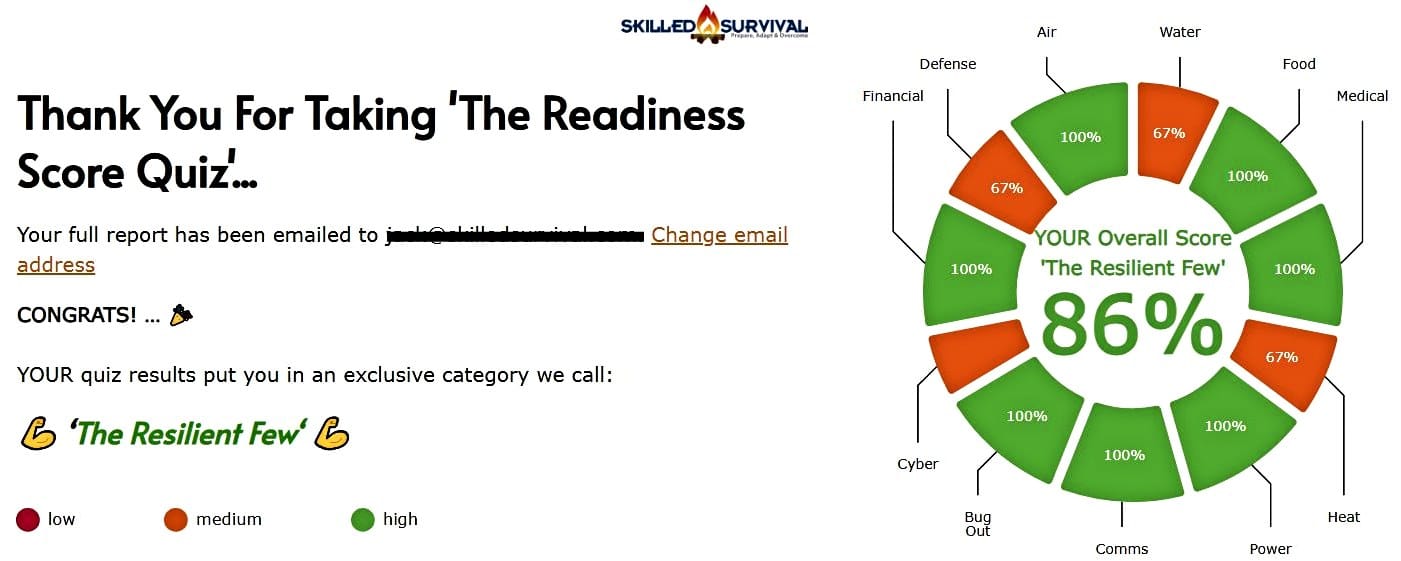
AND... I've still got a few gaps in my preps...🤔 But at least, I'm not part of 'The Fragile Masses'. 👍 Find out where YOU stand by answering a few questions...
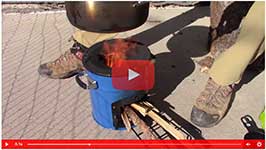
Recommended Reading
Long Term Fuel Storage For Survival Emergencies
Long term fuel storage is crucial in emergencies, but fuels must be stored properly especially long term gasoline storage.
How To Store Seeds For Wise Prepping & Survival
When seed saving and seed storage, you must do it right. Learn how to store seeds so they'll thrive the next planting season.
Common Everyday Carry Mistakes YOU Must Avoid At All Costs
The only person qualified to build YOUR Best Everyday Carry (EDC) is YOU. To do it right, you must avoid these common mistakes and pitfalls.
Nuclear Fallout Map: Would I Survive A Nuclear Bomb?
Have you seen this nuclear fallout map? Or run a nuclear simulation to see the damage a nuke would do to your city? If not, check this out.
Homestead Survival: How To Master Plan Your Safe Haven
Use this simple 6 homestead survival plan to successfully survive (and thrive) even if the world falls into chaos...
Nuclear Attack Scenario: Horrific Facts You Must Know
Welcome to our modern nuclear attack scenario. As tensions rise the FEAR of a nuclear exchange is fading and complacency kills.
